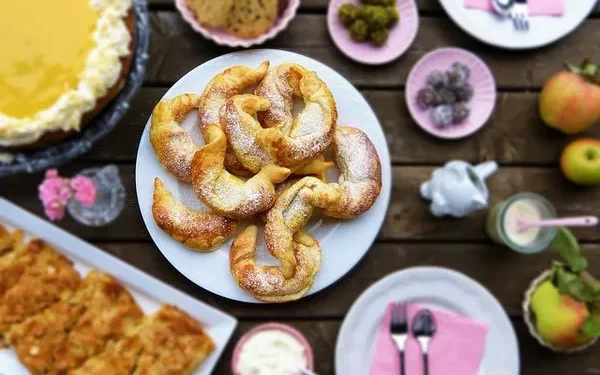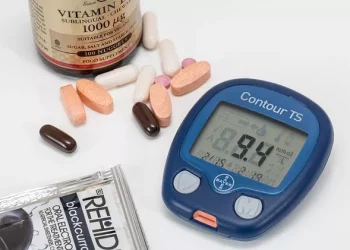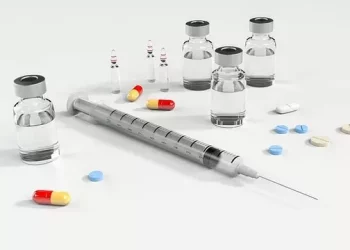Reactive hypoglycemia, a condition that causes a drop in blood sugar levels after eating, can be a challenge for individuals managing their blood sugar. Unlike fasting hypoglycemia, which occurs when blood sugar drops during periods of fasting or overnight, reactive hypoglycemia is triggered by food intake, usually after meals. This condition is most commonly seen in individuals with diabetes, but it can also affect those without it. The primary strategy to manage reactive hypoglycemia involves diet modifications aimed at stabilizing blood sugar levels and preventing extreme fluctuations. In this article, we’ll delve into what foods are good for managing reactive hypoglycemia, and why these choices are particularly beneficial.
Understanding Reactive Hypoglycemia
Reactive hypoglycemia typically occurs 1-3 hours after eating and is characterized by symptoms like dizziness, sweating, shaking, irritability, confusion, and weakness. These symptoms are a result of blood sugar levels dropping too low. While the exact cause of reactive hypoglycemia is not always clear, it is often related to insulin resistance or an overproduction of insulin in response to food intake.
For individuals with diabetes, especially those using insulin or other medications that increase insulin levels, reactive hypoglycemia can be more common. However, people without diabetes can also experience reactive hypoglycemia, which can be triggered by large carbohydrate-rich meals that cause a rapid spike in blood sugar, followed by a sharp decline.
The key to managing reactive hypoglycemia is stabilizing blood sugar levels through balanced meals and snacks. In particular, focusing on foods that have a low glycemic index (GI) and are rich in fiber, healthy fats, and protein can help prevent the sharp spikes and crashes in blood sugar that lead to hypoglycemia.
The Role of Glycemic Index in Managing Reactive Hypoglycemia
The glycemic index (GI) is a ranking system that measures how quickly carbohydrates in a food raise blood sugar levels. Foods with a high GI cause a rapid increase in blood sugar, while foods with a low GI have a slower, more gradual impact. For individuals with reactive hypoglycemia, focusing on low-GI foods can help prevent blood sugar spikes followed by sharp drops.
Low-GI foods typically have a score of 55 or less, while foods with a high GI have a score of 70 or more. By incorporating more low-GI foods into the diet, individuals with reactive hypoglycemia can achieve better blood sugar control and reduce the frequency and severity of symptoms.
What Foods Are Good for Reactive Hypoglycemia?
When managing reactive hypoglycemia, it’s important to choose foods that support stable blood sugar levels. These foods generally have a lower GI, are rich in fiber, contain healthy fats, and include moderate amounts of protein. Let’s explore some of the best food choices for those managing reactive hypoglycemia:
1. Non-Starchy Vegetables
Non-starchy vegetables are excellent choices for individuals with reactive hypoglycemia. They are naturally low in carbohydrates, meaning they have a minimal impact on blood sugar levels. Additionally, these vegetables are packed with fiber, which helps slow the absorption of sugar into the bloodstream.
Examples of non-starchy vegetables:
-
Leafy greens like spinach, kale, and arugula
-
Cruciferous vegetables such as broccoli, cauliflower, and Brussels sprouts
-
Cucumbers, bell peppers, and zucchini
These vegetables are nutrient-dense, providing essential vitamins, minerals, and antioxidants without spiking blood sugar levels. They can be eaten in abundance, making them an ideal choice for managing blood sugar.
2. Whole Grains
Whole grains are rich in fiber, which helps slow the absorption of carbohydrates and promotes more stable blood sugar levels. Unlike refined grains, which can cause quick spikes in blood sugar, whole grains provide a steady source of energy. Choosing whole grains over refined grains is one of the most effective strategies for managing reactive hypoglycemia.
Examples of whole grains:
-
Oats (especially steel-cut oats)
-
Quinoa
-
Brown rice
-
Barley
-
Whole wheat bread (look for 100% whole wheat)
When incorporating whole grains into the diet, it’s important to be mindful of portion sizes, as even whole grains can cause blood sugar fluctuations if consumed in large amounts. However, when eaten in moderation and paired with protein and healthy fats, whole grains are a great choice for preventing reactive hypoglycemia.
3. Lean Protein Sources
Protein plays a key role in stabilizing blood sugar levels. It helps slow the absorption of carbohydrates and provides a steady source of energy. Lean protein sources, such as poultry, fish, and plant-based proteins, are particularly beneficial for those managing reactive hypoglycemia. Protein-rich foods also promote satiety, helping to prevent overeating and blood sugar swings.
Examples of lean protein sources:
-
Skinless poultry (chicken, turkey)
-
Fish (salmon, trout, mackerel)
-
Eggs
-
Tofu and tempeh
-
Legumes (lentils, chickpeas, beans)
Incorporating a source of protein into every meal and snack can help stabilize blood sugar levels and prevent the symptoms of hypoglycemia.
4. Healthy Fats
Healthy fats are an essential part of a balanced diet, especially for individuals with reactive hypoglycemia. Fats slow the digestion and absorption of carbohydrates, helping to stabilize blood sugar levels. In addition, they provide long-lasting energy and help promote fullness, reducing the likelihood of overeating.
Examples of healthy fats:
-
Avocados
-
Nuts and seeds (almonds, walnuts, chia seeds, flaxseeds)
-
Olive oil and coconut oil
-
Fatty fish (salmon, sardines, mackerel)
It’s important to focus on unsaturated fats, as they have numerous health benefits, including reducing inflammation and supporting heart health. Saturated fats, on the other hand, should be limited, as they can contribute to insulin resistance over time.
5. Legumes
Legumes, such as beans, lentils, and chickpeas, are high in fiber and protein, making them excellent choices for managing reactive hypoglycemia. They are digested slowly, which helps regulate blood sugar levels and provides a long-lasting source of energy.
Examples of legumes:
-
Lentils (red, green, or brown)
-
Chickpeas (garbanzo beans)
-
Kidney beans, black beans, pinto beans
-
Peas (green peas, split peas)
In addition to being good for blood sugar control, legumes are rich in other nutrients, such as iron, potassium, and folate. They can be added to salads, soups, stews, and even used as a base for vegetarian dishes.
6. Berries
Berries are among the best fruits for individuals managing reactive hypoglycemia. They are low in sugar and have a low glycemic index, making them an excellent choice for stabilizing blood sugar. Berries are also high in fiber and antioxidants, which support overall health and well-being.
Examples of berries:
-
Blueberries
-
Strawberries
-
Raspberries
-
Blackberries
Berries can be enjoyed on their own, added to yogurt, or incorporated into smoothies. Because of their low sugar content, they are less likely to cause a rapid increase in blood sugar compared to other fruits.
7. Greek Yogurt
Greek yogurt is an excellent source of protein and probiotics, which support digestive health. It is lower in sugar compared to regular yogurt and has a thicker texture, making it more filling. The protein in Greek yogurt helps stabilize blood sugar levels, while the probiotics promote gut health.
When choosing Greek yogurt, it’s important to select plain, unsweetened varieties. Many flavored yogurts contain added sugars, which can contribute to blood sugar spikes.
Benefits of Greek yogurt:
-
High in protein
-
Supports digestive health
-
Low in sugar
Greek yogurt can be eaten as a snack, added to smoothies, or used as a base for parfaits with fresh fruit and nuts.
8. Cinnamon
Cinnamon is a spice known for its potential to improve blood sugar control. Some studies suggest that cinnamon can help increase insulin sensitivity, which may be particularly helpful for individuals with reactive hypoglycemia. In addition, cinnamon adds flavor to foods without adding sugar, making it an ideal addition to a hypoglycemia-friendly diet.
How to use cinnamon:
-
Sprinkle it on oatmeal or yogurt
-
Add it to smoothies
-
Mix it into baked goods or stir-fries
While cinnamon can be a beneficial addition to the diet, it should be used in moderation. Ceylon cinnamon is preferred over cassia cinnamon, as it contains lower levels of coumarin, a compound that can be harmful in large amounts.
9. Apples with Nut Butter
Apples are a nutritious fruit that provides fiber, vitamins, and antioxidants. Paired with a small serving of nut butter, such as almond or peanut butter, apples become a balanced snack that combines fiber, healthy fats, and protein. This combination helps stabilize blood sugar and provides sustained energy.
Benefits of apples with nut butter:
-
Low glycemic index
-
High in fiber and protein
-
Provides a balance of carbohydrates, fats, and protein
Apple slices with nut butter can be an excellent snack to help prevent hypoglycemia between meals.
Conclusion
Managing reactive hypoglycemia involves a balanced approach to diet, focusing on foods that stabilize blood sugar levels and prevent rapid spikes and drops. Non-starchy vegetables, whole grains, lean protein sources, healthy fats, legumes, and fruits like berries and apples are all excellent choices for maintaining stable blood sugar. By incorporating these foods into a well-rounded diet, individuals with reactive hypoglycemia can reduce the frequency of symptoms and improve their overall quality of life. As always, it’s important to work with a healthcare provider or nutritionist to develop a personalized eating plan that meets individual needs and supports optimal blood sugar control.
Related topics:
What Are the Food Items to Reduce Sugar?


























